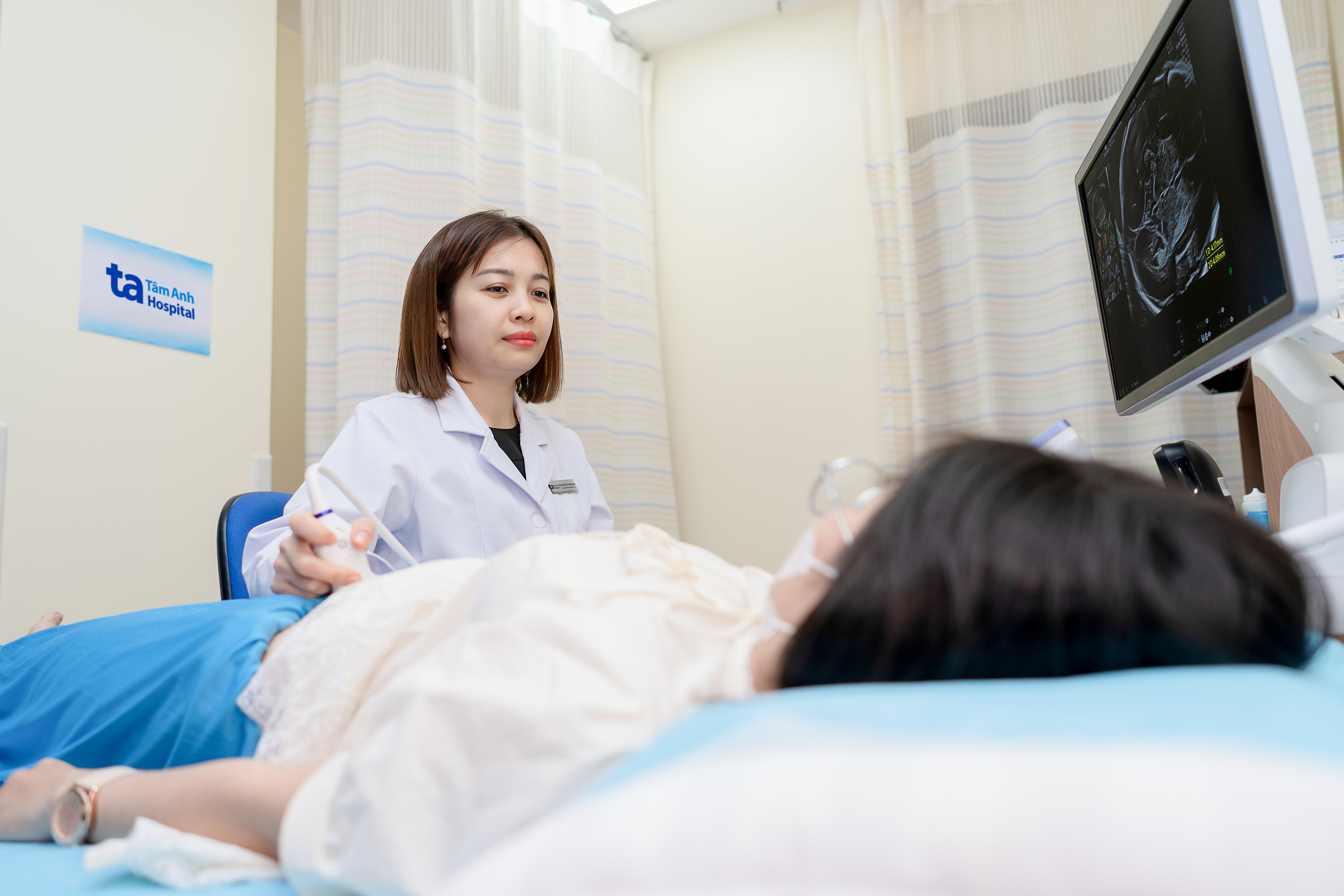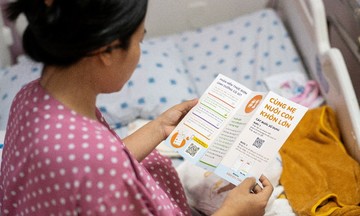Doctor Nguyen Thi Mong Nghi of the Fetal Medicine Center at Tam Anh General Hospital in Ho Chi Minh City observed several abnormalities during an ultrasound. The fetus presented with micrognathia (a small chin), a hooked nose (a pointed, downward-curving nose tip), and clenched hands. Neurological abnormalities included agenesis of the corpus callosum (the structure connecting the two hemispheres of the brain), and shallow Sylvian and parieto-occipital fissures (grooves separating the temporal lobe from the frontal and parietal lobes, and the parietal from the occipital lobe, respectively) compared to the gestational age.
The fetus also exhibited a right aortic arch, meaning the aorta (the main artery carrying blood from the heart to the head, neck, and upper limbs) branched to the right side of the trachea and esophagus, instead of the left.
Amniocentesis and genetic testing confirmed a duplication on the long arm of chromosome 9. "This is a rare genetic abnormality, with no specific statistics currently available in the medical literature," Dr. Nghi said, explaining that this anomaly occurs when a segment of the long arm of chromosome 9, specifically at position q21.11-q22.1, is duplicated, resulting in more than two copies of this segment in the cell and increasing the number of genes at this location.
The large duplication on chromosome 9 contained multiple genes crucial for neurological, morphological, and metabolic development. Duplication of these genes can disrupt gene expression, leading to intellectual and physical developmental delays, language and motor difficulties, autism spectrum disorders, and morphological abnormalities affecting the face, heart, kidneys, and bones.
Genetic testing of the parents did not reveal similar genetic abnormalities. Therefore, the fetal duplication at q21.11-q22.1 on the long arm of chromosome 9 was determined to be a de novo mutation, occurring randomly during conception. The likelihood of recurrence in subsequent pregnancies is low, according to Dr. Nghi.
The parents were counseled about the fetus's poor prognosis and were given the option to decide how to proceed. After careful consideration, they chose to terminate the pregnancy.
 |
Dr. Nghi performs an ultrasound on a pregnant woman. Illustrative photo: Thanh Luan |
Dr. Nghi performs an ultrasound on a pregnant woman. Illustrative photo: Thanh Luan
Chromosome 9 duplication can manifest in various ways, from no apparent symptoms to serious health issues. The severity depends on the size and location of the duplication, the affected genes, any associated abnormalities, and other risk factors.
Symptoms can include facial abnormalities, intrauterine growth retardation, premature birth, global developmental delays, hip dislocation, nasal voice, joint laxity, deep-set eyes and nose, language delays, everted lower lip, curved fingers, abnormal gait, hypopigmentation, hypotonia, intellectual disability, ptosis, short 5th finger, specific learning disorders, capillary hemangiomas, undescended testicles, feeding difficulties in infancy, microcephaly, and proportionate short stature.
Currently, there is no cure for chromosome 9 duplication. Affected children require multidisciplinary evaluations to identify all potential health problems. Management focuses on symptom control, psychomotor development support, and improving the child's quality of life.
Doctors recommend prenatal screening for fetal abnormalities and genetic disorders. Pregnant women should adhere to scheduled prenatal check-ups, especially during the thu nhat trimester (11-13 weeks and 6 days). This is the ideal time for nuchal translucency ultrasound combined with a double test blood screening or non-invasive prenatal testing (NIPT) to screen for chromosomal abnormalities. If a chromosomal abnormality is suspected, doctors may recommend chorionic villus sampling or amniocentesis for a definitive diagnosis.
Early detection of fetal abnormalities allows for potential interventions, such as in-utero correction of certain defects, specialized care and monitoring during pregnancy, and postnatal treatment planning. For genetic disorders that may recur in subsequent pregnancies, doctors can develop preventive strategies to help parents have healthy children in the future.
Ngoc Chau
| Readers can submit questions about obstetrics and gynecology here for doctors to answer. |












